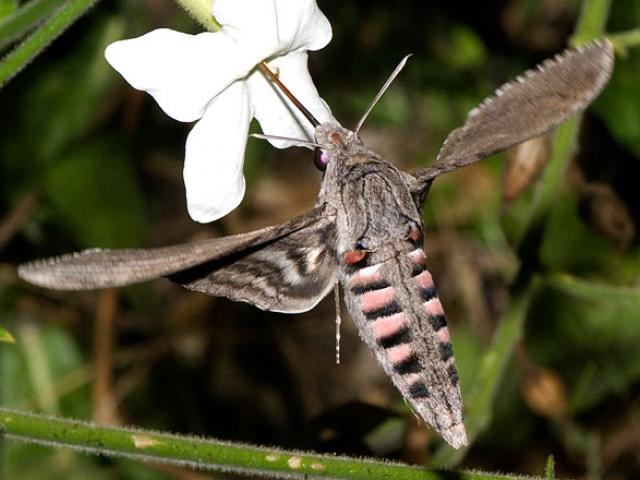Have you considered making a Moon Garden for moths this autumn? Moon gardens contain plants which are best appreciated at night and usually have white or pale-coloured – often fragrant – flowers or silver foliage which glow in the moonlight. This combination of plants and fragrance can make a very relaxing space and increase the hours you can enjoy your garden.
What to plant
Flowers that have evolved to attract moths as pollinators are often shades of white, lilac or pale pink so they can be seen at night and they emit their scent more strongly after dark.
Flowers which open in late afternoon or evening and release their scent include Evening Primrose Oenothera spp., Tobacco Plant Nicotiana alata and the annuals Four O’clock Plant Mirabilis jalapa 'Alba' and Moonflower Ipomoea alba, which is a climber with large trumpet-shaped flowers.

Some spectacular immigrant species such as the Convolvulus Hawk-moth can be drawn to feed on the long, tube-shaped flowers of Tobacco Plant N. alata ‘Sensation Mixed’.
Other scented flowers include Night Phlox Zaluzianskya ovata, Night-scented Stock Matthiola longipetala, Sweet Alyssum Lobularia maritima, White Lavender Lavandula angustifolia 'Arctic Snow’ and the climbers Jasmine Jasminum officinale and Honeysuckle Lonicera spp. In the border you could just choose white versions of favourites such as Cosmos bipinnatus 'Purity', White Campion Silene latifolia, White Valerian Centranthus ruber 'Albus' and Coneflower Echinacea purpurea ‘White Swan’.
Remember to include plants with silver foliage such as Lamb’s Ears Stachys byzantina along with shrubs with white flowers such as Buddleia davidii ‘White Profusion’ and White Hebe Hebe albicans.
Try and choose a variety of plants that will be in flower throughout the year. Start planning to makeover a corner of your garden so you have a moth heaven in time for next year’s Moth Night.
Happy Gardening!
The Secret Gardener


